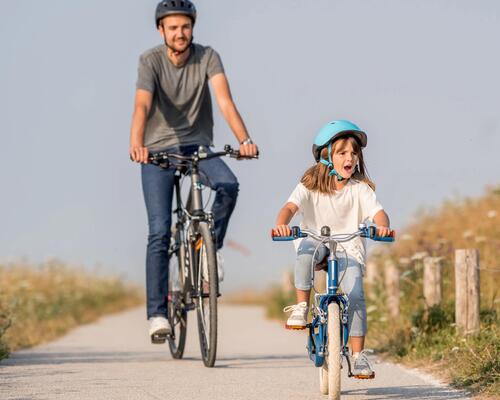1. What's the difference between a tricycle and a balance bike (bike without pedals)?
The difference between a balance bike (a bike without pedals) and a tricycle is pretty obvious: on a balance bike, your child is more or less vertical, whereas on a trike they're semi-reclined. The reason? The way each bike is designed. The posture that a child has to adopt on a balance bike - with their legs directly beneath their upper body - is a natural, physiological position. They therefore learn to balance naturally, as they would when learning to walk.
On a tricycle, the position is more stable because of the three wheels, the handlebar is higher than on a bike and, most importantly, the pedals are on the front wheel. Isn't stability good for learning? Not really. “It's not logical to use,” explains physiotherapist Karine Roulin. “On a tricycle, the child has their feet in front of them, which also means having their legs straight or pushing with their toes if they aren't very tall. The child can't put much force through the pedals and, on top of that, this position strains the abs.”










